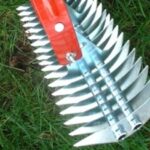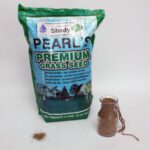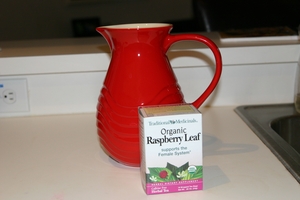Thatch is a layer of organic material that sits on the surface of the soil in your yard as it accumulates over time. Thatch is a natural occurrence and you should expect a layer like that once every year. Power raking involves getting rid of that layer so as to allow air to reach the surface of your lawn so roots and grass can get more air and grow thicker. Here are some tips for power raking in order to revitalize your lawn in the spring.
Power raking in early spring will help get your lawn ready for any re-seeding. It clears out any small debris that a leaf blower or mower will miss. What will be left will be the blades of grass firmly entrenched with a root system.
Power rakes use thin vertical blades to pull up the debris and settle it back on top of your lawn. Expect to spend a little more time power raking as many rakes are push models and can be heavy.
If you don’t have one already, you can buy a walk-behind power rake or even and attachment to your riding lawnmower for an easier time of power raking. Check with your lawnmower manufacturer to see if they make a power rake attachment for your mower like this one from Woods Equipment for larger lawns.
Otherwise, a power rake is like a garden rake that gets soil going. A power rake without the push behind technology is just a simple rake with a wooden handle and short metal spikes on the end much like a garden rake.
Thatch will accumulate on top of your lawn once you run the power rake over it. Expect to spend some time cleaning up the piles of thatch afterwards. If the thatch is very thick you’ll have to do this by hand. Thinner piles can be sucked up with a mower.
If you can stand to spend some extra time doing so, mulching the thatch once you get it up and putting it back in your yard will help with the nutrients. Adding thatch to a compose pile will also be beneficial for whatever plants utilize the compost later on. My point is, don’t waste all of this good organic material!
Rake your yard in the morning when the grass is less likely to be trying to soak up the sun. In early spring, sun is still a premium so try to pull up the thatch before it becomes too hot. Take more than a day if you have a large enough lawn and plan for doing sections at a time.
Watering your lawn 24 hours before you power rake will help loosen up the thatch and make it pull off of the soft soil easier. You don’t need to soak your lawn just yet but a nice layer of water will help.
Power raking should be done at a time when there is nothing else going on with your yard. Give your grass time to rest before and after thatching.
The amount of thatch you pull up depends upon how thick your grass is. Generally, the thicker your grass the more thatch will be pulled up. If it seems like a lot, take a look at before and after you power rake a portion of your lawn to see what the equipment does and better understand power raking.





